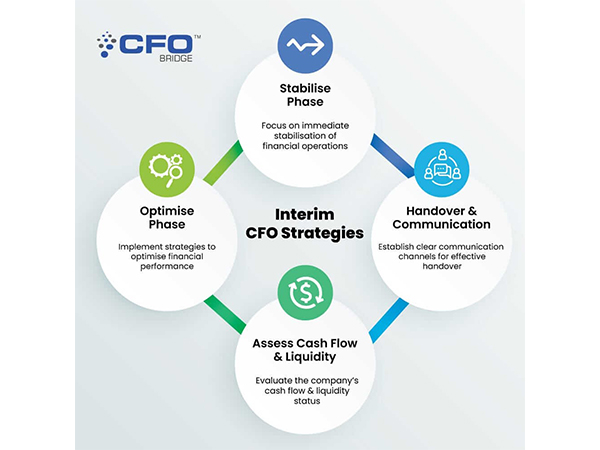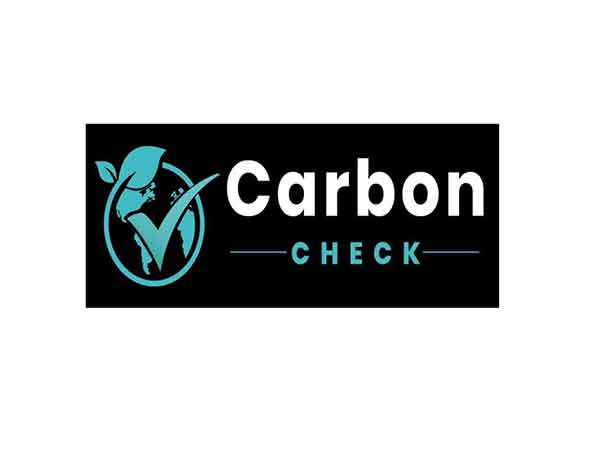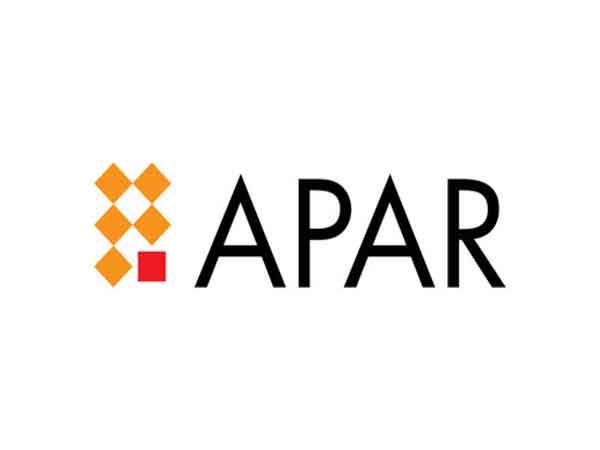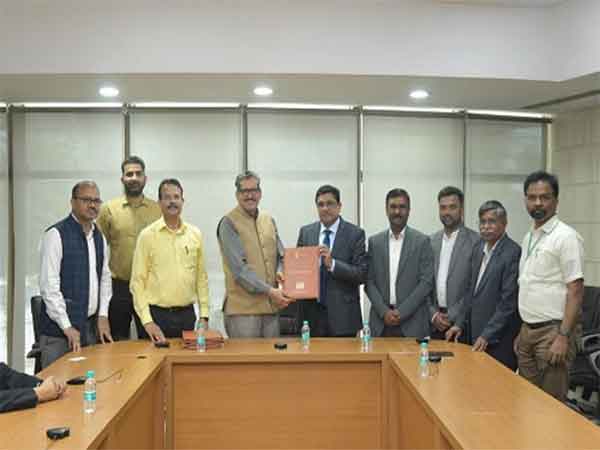
Interim CFO Strategies: How They Maintain Financial Stability During Leadership Transitions
Feb 19, 2025
VMPL
New Delhi [India], February 19: The abrupt departure of a Chief Financial Officer (CFO) can create instability in finances, disrupt operations, and affect the confidence of the stakeholders. Irrespective of whether the departure is through resignation, termination, or an unexpected vacancy, financial leadership may become absent and cause cash flow management, financial reporting, and investor relations to become at risk. In such a situation, a business faces risks of mismanaged finances, decline in investor confidence, and inefficiency in operation that can bring long-term damage if not addressed appropriately.
Interim CFOs bridge this gap to provide continuity and stability and ensure the implementation of financial oversight and strategic planning. They do not just fill the position temporarily but make quick financial diagnoses of risk, short-term liquidity measures, optimisation of financial controls, and transparent leadership for the finance team. Strategic interventions from them safeguard financial health so that businesses stay afloat in the event of leadership uncertainty.
Before we enumerate the areas where companies can take interim CFO's support, Shilpa Desai, CFO Partner at CFO Bridge, offers a word of caution on what businesses should avoid.
"Companies should avoid their interim CFO taking long-term decisions that squarely fall on the plate of a full-time CFO, for example, deciding which accounting system to change to or hiring the full-time second-in-command of the CFO. This is not because the interim CFO is not competent to make the decision but because the full-time CFO has to live with these decisions after he/she has joined and would want a say in them. These are purely due to the intricacies of human emotions and have nothing to do with the technical capabilities of the interim CFO.
Once you take care of these nuances, an interim CFO can help with a steady handover from the outgoing CFO, immediately stabilise your finance function, ensure timely and professional stakeholder communication, streamline the reporting function, and even assist in strategic plans and cost optimisation. With these taken care of in the best possible way, the management can ensure they look for the right full-time CFO and that the search and joining are not hastened unduly." she says.
Here's how the interim CFO can help in various ways:
Phase 1: Immediate Stabilisation
This would be the initial period for an Interim CFO to perform rapid financial assessment and risk mitigation. This mainly identifies weak points and urgent economic issues.
Operational Continuity during the handover phase
- Immediate handover: The interim CFO is a plug-and-play model where the outgoing CFO can give a handover before exiting. The critical processes are secured, and the key internal stakeholders, as well as external stakeholders like auditors, bankers, etc, can continue with their relationship without any break of communication.
- Reporting and Operational Integrity - The interim CFO takes charge as soon as he is onboarded, and there are no gaps in the reporting due to any vacuum in the position. Even operationally, all processes and delegations are tightly secured, leading to minimum breakage of communication or operational handover.
- Expert External Validation - Since the interim CFO carries an outsider's view of the internal process, reportings and key metrics, he adds significant value by bringing valuable insights from an external perspective. This not only helps validate the process, reporting, and other structures, but it will also help highlight weaknesses, if any, and help fix them on priority.
Rapid Financial Health Check
- Cash Flow & Liquidity Analysis: A detailed examination of the company's short-term liquidity position is necessary. The Interim CFO checks on the status of accounts payable and receivable, examines bank balances, and determines cash reserves to ensure that operational expenses and obligations are met without disruption.
- Debt & Liability Assessment: Debts, existing liabilities, and future financial liabilities must be considered to avoid a liquidity crisis. The chief financial officer reviews conditions for large loans or credits and makes concessions to negotiate better repayment structures when necessary.
Immediate Stakeholder Communication & Reassurance
- Investor & Lender Management: The investors and the financial institutions need to be promptly informed about the change in leadership and the financial strategies adopted for maintaining confidence. The CFO is transparent and presents data-based reassurance.
- Leadership of the Finance Team: The finance department must be stable and functional. The Interim CFO quickly gains control, delegates responsibility effectively, and ensures that all the critical financial processes operate without disruption.
Phase 2: Initiating Stability Measures
Once the immediate hazards are mitigated, the stabilisation process focuses on long-term sustainability through sustainable management of finances.
Cash Flow Optimisation & Liquidity Management And Cost Control
- Accounts Receivable Acceleration: One of the most prominent steps in stabilisation is cash flow improvement, which is done by speeding up the outstanding receivables in the books of accounts. Improving invoicing processes, strengthening credit terms and using automated payment reminders enhance this process.
- Strategic Working Capital Management: Proper working capital management is necessary. The Interim CFO emphasises optimising inventory turns, ensuring appropriate payables to balance receivables, and having liquidity buffers. It can also help secure additional credit lines if needed.
- Cost Oversight and Budgetary Control: With the CFO and critical processes firmly in place, the interim CFO can also keep an eye on existing costs, budgets, and variances in expenses over budgets. The interim CFO can also ensure negotiation with vendors/suppliers, etc, to ensure the cost structure is not altered due to any vacuum in the critical position that oversees costs and budget.
Strengthening Internal Controls & Financial Governance
- Risk Identification & Compliance Audits: This assesses financial risks, internal control weaknesses, and compliance with industry standards for fraud and regulatory breaches. The CFO ensures that stringent financial controls and compliance processes are followed stringently.
- Implementation of Strengthening Internal Controls: Internal controls are essential to protect the organisation's financial assets. The interim CFO ensures proper segregation of duties, transactions enter financial books with properly authorised approvals, and tracking for all expenses is fully active.
- Compliance with Law and Regulations: Finance and Accounting regulations are significant. The interim CFO initiates improvements in financial governance and minimises the chances of legal and economic punishment.
Phase 3: Smooth Transition with continuity in communication and Strategic Alignment
While stabilisation of the finances is realised, the long-term planning of the finances and handing over the mantle smoothly to the new CFO are on the way. The search for the new CFO is also supported and is in no way hurried due to the exigency of business operations.
- Scenario Planning: The interim CFO prepares for several financial contingencies, including economic downturns, shifts in industry dynamics, and unexpected financial shocks. Where required, the interim CFO can also help with a projection of growth to come, investment planning, and proper capital allocation.
- Technology & Automation Implementation: Areas of efficiency are addressed through integrating ERP systems, automated reporting tools, and advanced data analytics to arrive at better and more informed decision-making.
- Support to search for Permanent CFO: With the key stakeholders onboarded and the business continuity as well as the critical support to operations, the management can ensure the permanent position is filled with the right candidate, even if it takes longer to find the right candidate.
- Smooth Handover to the Permanent CFO: With the stable financial position of the organisation as well as smooth operations of the department and internal stakeholders, the permanent CFO, when he joins, eases into the organisation without any backlog of reporting, compliance or fixing of process, etc. This helps with a smooth transition and a better runway for the new CFO.
What you should not ask the Interim CFO to do
While an interim CFO plays a vital role, some decisions should be reserved for the permanent CFO:
- Avoid major system changes: It will be better not to have your interim CFO make decisions on changes in the accounting system or implement tools with large usage and deep integration into finance processes. This is not because he/she is not competent to take those calls but because your full-time CFO would want to be part of such decisions, especially when he/she has to manage it once he/she is onboarded.
- Hiring key financial leaders: The second-in-command should be hired after the permanent CFO joins to ensure a strong working relationship.
- Long-term financial commitments: Decisions with lasting financial implications, such as restructuring capital expenditures, should be made by the full-time CFO.
Key Takeaways
Interim CFOs play a vital role in maintaining financial stability during executive transitions by:
- Mitigating immediate financial risks through rapid assessment and liquidity management.
- Ensuring operational continuity by engaging stakeholders and stabilising the finance department.
- Strengthening internal controls to prevent fraud and regulatory violations.
- Optimising cash flow & cost structures for sustainable financial health.
- Providing long-term strategic direction to align financial planning with business objectives.
- Facilitate adequate time to search for the right candidate and a smooth transition by onboarding and preparing the next CFO.
It is not about maintaining financial stability; it's about increasing the economic resilience of businesses to navigate the turbulent processes with complete confidence and emerge stronger.
Through these structured measures, Interim CFOs enable businesses to withstand financial turbulence and prepare for long-term growth.
(ADVERTORIAL DISCLAIMER: The above press release has been provided by VMPL. ANI will not be responsible in any way for the content of the same)









